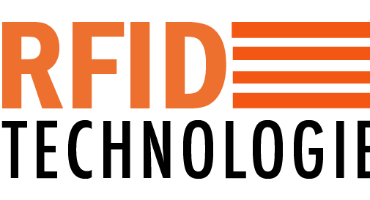Here's how RFID technology enhances these aspects of inventory management:
Real-Time Inventory Tracking: RFID tags & RFID Labels attached to individual products or packaging enable real-time tracking of inventory. As items pass through RFID readers, their presence is automatically recorded, providing accurate and up-to-date inventory information. This real-time visibility helps retailers know the exact location and quantity of each item in their inventory.
UHF RFID tags and label - both hard and soft UHF RFID Label Tags can be attached to items or packaging, allowing for real-time tracking of inventory. This enables businesses to automate stocktaking, reduce manual errors, streamline replenishment processes, and improve overall inventory accuracy. Real-time tracking of inventory doing automate stocktaking using UHF RFID Readers - both Fixed-mounted UHF RFID Readers as well as Portable Mobile UHF RFID Readers
Stock Level Monitoring: RFID technology allows for automated and continuous monitoring of stock levels. As items are sold or moved within the supply chain, UHF RFID Readers - both Fixed-mounted UHF RFID Readers as well as Portable Mobile UHF RFID Readerscapture the changes in inventory in real time. This information enables retailers to have a precise understanding of their current stock levels, avoiding manual stocktaking and reducing the likelihood of errors.
Replenishment Optimization: With real-time inventory data provided by RFID technology, retailers can optimize their replenishment activities. They can set up automated alerts and notifications based on predefined stock thresholds to initiate replenishment orders. This helps prevent stockouts by ensuring timely restocking of items in demand.
Stockout Reduction: RFID technology helps minimize stockouts by providing accurate and timely inventory data. By leveraging RFID-enabled automated inventory tracking, retailers can identify potential stockouts in advance and take proactive measures to replenish inventory, ensuring products are available when customers need them. This improves customer satisfaction and prevents lost sales opportunities.
Overstocking Prevention: Overstocking can tie up capital, increase storage costs, and lead to obsolescence or waste. RFID technology provides real-time visibility into inventory levels, enabling retailers to optimize their stock levels and prevent overstocking. By having accurate and timely data on inventory movement, retailers can make data-driven decisions to align their inventory levels with demand.
Operational Efficiency: RFID technology streamlines inventory management processes and enhances operational efficiency. Automated inventory tracking reduces the time and effort required for manual stocktaking, allowing employees to focus on more value-added tasks. The ability to quickly locate and retrieve items from inventory improves overall operational efficiency and reduces the time spent searching for products.
Data Analytics and Forecasting: The data collected through RFID technology can be analyzed to gain valuable insights. Retailers can use analytics tools to identify sales patterns, demand trends, and seasonality. These insights help in demand forecasting, optimizing inventory levels, and making informed decisions regarding replenishment strategies.
Installing RFID technology for inventory management and replenishment processes, retailers can improve stock accuracy, reduce stockouts, minimize overstocking, enhance operational efficiency, and ultimately deliver a better customer experience. It is essential to carefully plan and integrate RFID technology into existing systems and processes, ensuring proper tag placement, reader coverage, and data integration for optimal results.
UHF RFID tags and label - both hard and soft UHF RFID Label Tags can be attached to items or packaging, allowing for real-time tracking of inventory. This enables businesses to automate stocktaking, reduce manual errors, streamline replenishment processes, and improve overall inventory accuracy. Real-time tracking of inventory doing automate stocktaking using UHF RFID Readers - both Fixed-mounted UHF RFID Readers as well as Portable Mobile UHF RFID Readers

